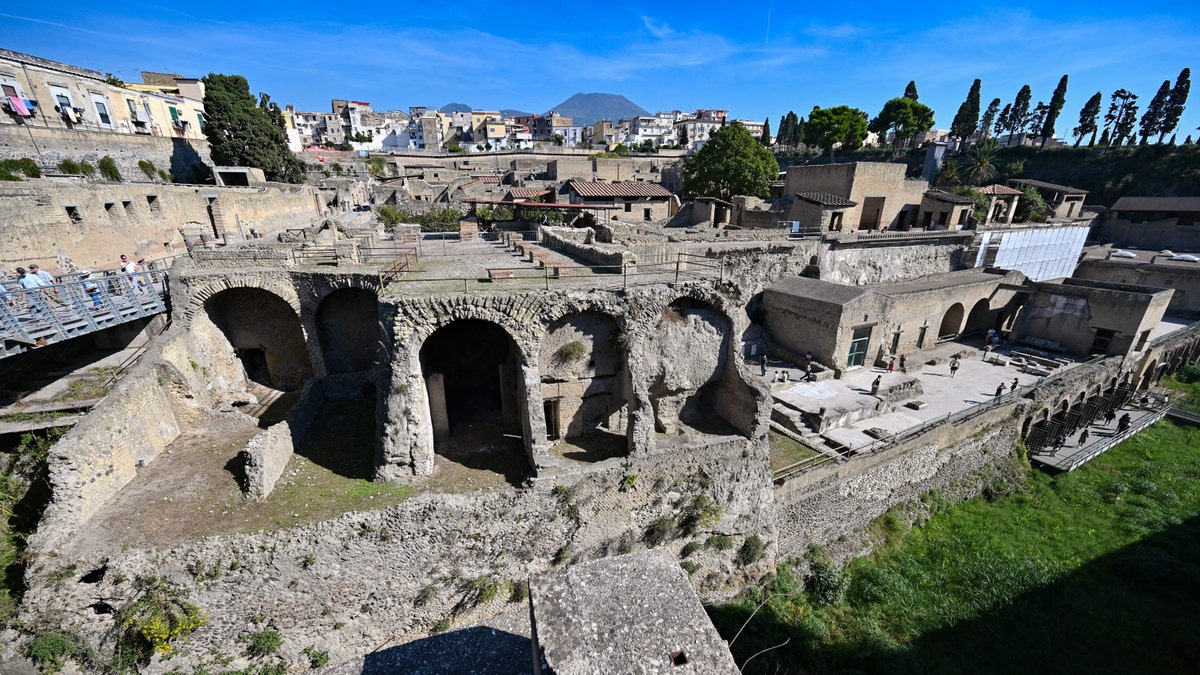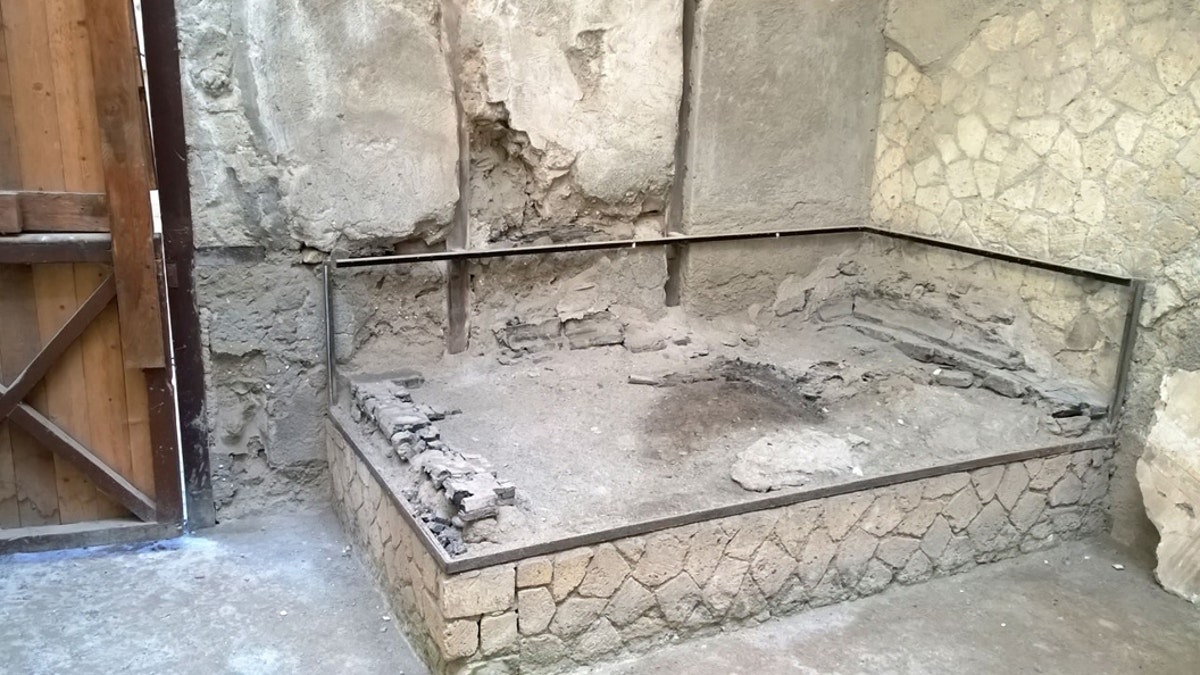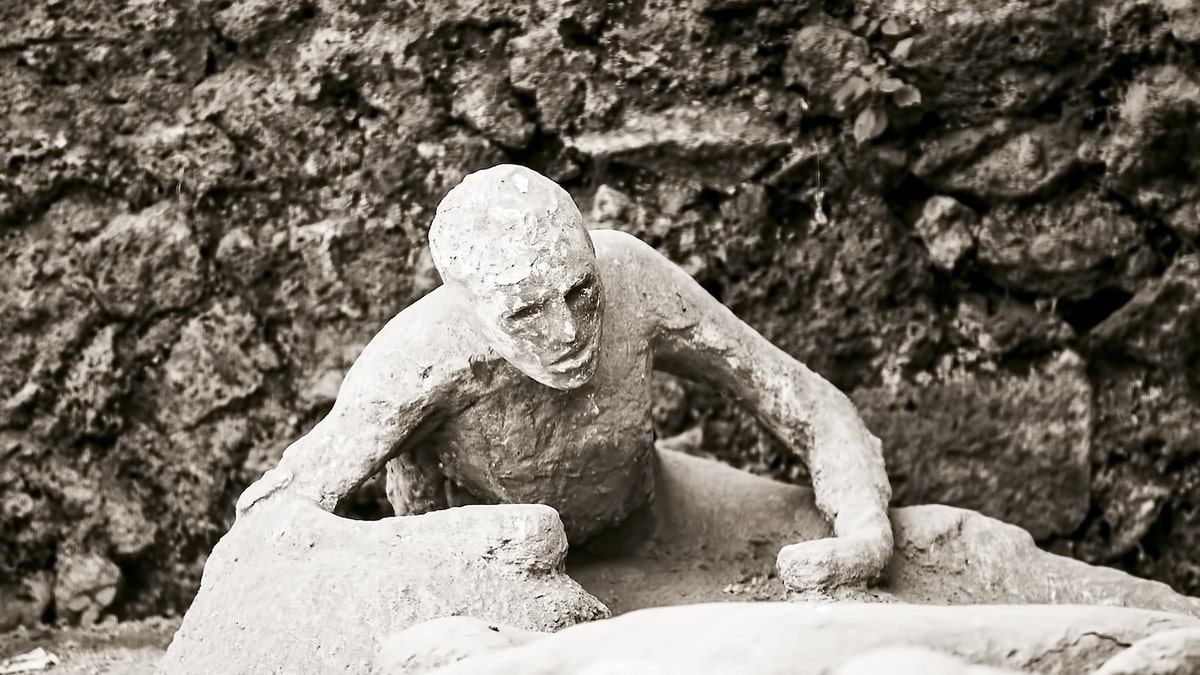Fox News Flash top headlines for Jan. 22
Fox News Flash top headlines for Jan. 22 are here. Check out what's clicking on Foxnews.com
Archaeologists in the ancient city of Pompeii have discovered ancient brain matter that was turned into glass as a result of the volcanic eruption that devastated the city in 79 A.D.
The research, published in the New England Journal of Medicine, notes that a victim from the Vesuvius explosion was discovered in the 1960s at the Collegium Augustalium in Herculaneum. The body was found "lying on a wooden bed, buried by volcanic ash." It wasn't until years later, when the victim's skull was examined, that researchers discovered the brain remains were vitrified, rather than saponified.
"The preservation of ancient brain remains is an extremely rare find, but this is the first-ever discovery of ancient human brain remains, vitrified by heat at about [950 degrees Fahrenheit] produced by a volcanic eruption," the study's lead author, Pier Paolo Petrone, said in an email to Fox News.

The temperature at the Collegium may have reached a maximum of 968 degrees Fahrenheit (520 degrees Celsius), based on charred wood that was found at the site. (Pier Paolo Petrone)
MOUNT VESUVIUS CAUSED VICTIMS' HEADS TO EXPLODE, BLOOD TO BOIL: STUDY
Vitrification is the process by which "tissue ... has been burned at high heat and turned into glass or a glaze," according to the New England Journal of Medicine article. Although rare to find, cerebral tissues found in archaeological discoveries have saponified, the process by which triglycerides turn into glycerol and fatty acid salts, or soap.
The temperature at the Collegium may have reached a maximum of 968 degrees Fahrenheit (520 degrees Celsius), based on charred wood that was found at the site.
In addition to the vitrified brain, a solidified spongy mass that entrapped the chest bones of the victim was discovered. Petrone said this meant that the volcanic clouds from Vesuvius were hot enough to "to burn body fat and vaporize soft tissues."

No other victims who died at the site were found to have vitrified brains or a spongy mass entrapping their chest. (Pier Paolo Petrone)
No other victims who died at the site were found to have vitrified brains or a spongy mass entrapping their chest, suggesting the victim was "unique" to the disaster, the article noted.
Petrone, who has worked on the Herculaneum site since the mid-1990s when he excavated 80 victims, told Fox News he first spotted the vitrified brain "many years later."

The archaeological site of Herculaneum in Ercolano, near Naples, with the Mount Vesuvius volcano in the background, on Oct. 23, 2019. (Photo by ANDREAS SOLARO/AFP via Getty Images)
TRAGIC REMAINS OF POMPEII CHILD WHO TRIED TO SHELTER FROM VOLCANO FOUND AT 'GRAND BATHS'
"Looking carefully at the remains of this victim, the last one still remaining on the site, I noticed that something dark was shining inside the head," Petrone, 59, explained, adding that the inner part of the skull was exposed because of the explosion.
"So I realized that these were small black fragments with a glassy appearance, something like obsidian in appearance, but definitely more fragile," Petrone continued. "This material was preserved exclusively in the victim's skull. Then, it had to be the remains of the brain, somehow vitrified. But it had to be proved beyond a reasonable doubt."
Since their discovery in the 16th century, the Pompeii ruins have given researchers great insight into what life was like before Mount Vesuvius erupted and wiped out the entire city in 79 A.D. Recently, there has been some dispute about whether the volcano erupted in August or October of that year.

(Credit: Pier Paolo Petrone)
In April 2019, an ancient eatery known as a thermopolium (akin to a modern-day snack bar), where patrons could get drinks and hot food, was discovered among the city's ruins. Researchers have also found a fresco depicting a sensual scene involving the Roman god Jupiter and Leda and the remains of a petrified horse recently.

A victim who perished in Pompeii after Mount Vesuvius erupted in A.D. 79. (Shutterstock)
A "sorcerer's treasure trove" of items, including bones, skull charms and gems used for rituals was also recently discovered.
DRAMATIC VOLCANO DEATH: HUGE FLYING STONE CRUSHED MAN IN POMPEII, ARCHAEOLOGISTS DISCOVER
When Mount Vesuvius erupted, the explosion caused such extreme heat that victims' skulls exploded, their blood boiled and their muscles, flesh and brains were replaced with ash, according to a study published in 2018.

